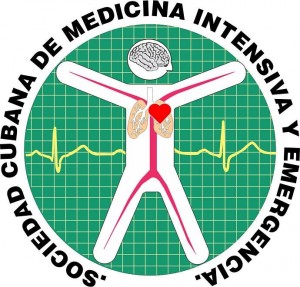Pronóstico de mortalidad con la aplicación de APACHE II en pacientes graves. Prognoses of mortality in critical patients by APACHE II score
Palabras clave:
Escala APACHE II, mortalidad, unidad de cuidados intensivos / APACHE II score, mortality, intensive care unitResumen
Introducción: En la unidad de cuidados intensivos del Hospital Joaquín Albarrán, se implementó el uso de la escala APACHE II, teniendo en cuenta su fácil empleo y confiabilidad.
Objetivo: Describir la mortalidad en la unidad de cuidados intensivos del Hospital Joaquín Albarrán durante el año 2012 relacionándola con el score APACHE II.
Método: Estudio observacional, retrospectivo, desde el 1 de enero al 31 de diciembre del año 2012. Universo de estudio fueron 678 pacientes y la muestra 639 pacientes los cuales fueron evaluados con la escala APACHE II en las primeras 24 horas del ingreso. Se utilizaron los porcentajes, medias aritméticas, y se empleó el estadígrafo X2 con un nivel de significación p <0.05.
Resultados: Mortalidad fue del 23.9 %. Predominaron los ingresos en los grupos de edades entre 70 a 79 años (25 %). Predominaron los fallecidos en pacientes con perfil clínico (17.4 %) sobre los quirúrgicos (6.6 %), aunque no se encontraron diferencias significativas (p≥0.05). En el grupo de 5 a 9 puntos del perfil clínico, hubo 36.6 % de mortalidad, por encima de la mortalidad predicha, al igual que en el grupo de 10 a 14 puntos (13.1 % de mortalidad observada contra un 8 % predicha). En pacientes con perfil quirúrgico, si hubo buena correlación (p ≤0.05).
Conclusiones: Los pacientes ingresados con perfil clínico, en el grupo de edades de 70 a 79 años tienen mayor probabilidad de morir. El APACHE II aplicado dentro de las primeras 24 horas fue de utilidad para predecir la probabilidad de muerte.
Abstract:
Introduction: In the Intensive Care Unit (ICU) of Joaquin Albarrán Hospital was implemented the use of the APACHE II scale, (Acute Physiology and Chronic Health Status) because of its easy use and certainty of its results.
Objective: To describe the mortality in the intensive care unit of Joaquin Albarrán during the 2012 year.
Methods: Retrospective, observational study during the 2012 year. The study Universe was 678 admitted patients at the ICU and the sample was 639 patients evaluated by means of the APACHE II scale during the first 24 hours of their admission. They were used percentages, arithmetical halves and the χ2 with a level of significance of p <0, 05.
Results: Mortality was of 23,9 %. There was a predominance of admission of the age group of 70 to 79 years (25%). There was a predominance of dead patients with clinical profile (17, 7) over the surgical profile (6,6 %) although there were not found significant differences (p≥0,005). In the group of 5 to 9 points of the clinical profile, there was 36,6 % of mortality higher than the predicted one, the same as in the group with 10 to 14 points ( 13,1% observed vs. 8% predicted). In surgical profile patients, there was an adequate correlation (p≤ 0,005).
Conclusions: The admitted patients with clinical profile of the age group of 70 to 79 years have more probability of dying. The applied APACHE II within the first 24 hours was of great utility for predicting the probability of death.
Descargas
Citas
1. Caballero López A. Sistemas de valoración pronóstica y escalas evaluadoras en medicina intensiva. En: Caballero López A. Texto de Terapia Intensiva, Tomo I. La Habana: Editorial Ciencias Médicas; 2006. p. 48-71.
2. Alves GC, Silva GB Jr, Lima RSA, Sobral JB, Mota RMS, Abreu KLS, et al. Fatores de risco para óbito em pacientes idosos gravemente enfermos. Rev Bras Ter Intensiva. 2010;22(2):138-43
3. Soberanes RL, Salazar EDC, Cetina CMA. Morbimortalidad en 10 años de atención en la unidad de cuidados intensivos del Hospital General Agustín O´Horan de Mérida, Yucatán. Rev Asoc Mex MedCrit Ter Int. [Internet]. 2006 [Citado enero de 2011]; 20(2): [Aprox. 4p.]. Disponible en: http://www.medigraphic.com/pdfs/medcri/ti-2006/ti062b.pdf
4. Tamargo Barbeito TO. Mortalidad y ajuste por riesgo en la Unidad de Cuidados Intensivos del Hospital Clínico-quirúrgico "Hermanos Ameijeiras" Rev Cub Med. 2012;51:1140
5. Bembibre Tabeada R, Cabrera Gómez J, Suárez Surís R, Concepción Morales E. Creación y validación de un instrumento para la ayuda pronóstica y el seguimiento de pacientes con enfermedad cerebrovascular. [monografía en Internet], Cienfuegos. Cuba; 2010 Hospital Universitario Clínico Quirúrgico Gustavo Aldereguía Lima, [citado26Enerodel2010].Disponibleen:http://www.sld.cu/galerias/pdf/sitios/urgencias.
6. Sakr Y, Krauss C, Amaral AC, Réa-Neto A, Specht M, Reinhart K, et al. Comparison of the performance of SAPS II, SAPS 3, APACHE II, and their customized prognostic models in a surgical intensive care unit. Br J Anaesth. 2008; 101(6):798-803.
7. Tanaka Y, Shimizu M, Hirabayashi H. Acute Physiology, Age, and Chronic Health Evaluation (APACHE) III score is an alternative efficient predictor of mortality in burn patients. Burns. 2007; 33(3):316–20.
8. Zanon F, Caovilla JJ, Michel RS, Cabeda EV, Ceretta DF, Luckemeyer GD, et al. Sepse na unidade de terapia intensiva: etiologias, fatores prognósticos e mortalidade. Rev Bras Ter Intensiva. 2008;20(2):128-34
9. Waters M, Nightingale P, Edwards JD. A critical study of the APACHE II scoring system using earlier data collection. [monografía en Internet] England: Manchester; 2009 [cited October 13] disponible en: http://em j.bmj.com/cgi
10. Garcia PC, Fugulin FMT. Nursing care time and quality indicators for adult intensive care: correlation analysis. Rev. Latino-Am. Enfermagem. 2012;20(4):651-8
11. Lago Queija M. Aplicación de la escala predictiva APACHE II en pacientes ventilados en la Unidad de Cuidados Intensivos. URGRAV 2009. ISBN: 978-959-7139-90-4
12. Puga Torres MS, Pérez Martínez E, Pérez Pérez F, Gómez Sánchez A. Factores que influyen en la mortalidad del paciente ventilado en una unidad de cuidados intensivos. Rev Cub Med Intens Emerg. 2009; 8(4).
13. Vincent JL, Opal SM, Marshall JC. Ten reasons why we should NOT use severity scores as entry criteria for clinical trials or in our treatment decisions. Crit Care Med. 2010;38:283–7
14. Wong DT, Crofts SL, Gomez M. Evaluation of predictive ability of APACHE II system and hospital outcome in Canadian Intensive Care patients. Crit Care Med 1995; 23:1177-1183.
15. Markgraf R, Deutschinoff G, Pientka. Comparison of Acute Physiology and Chronic Health Evaluations II and III and Simplified Acute Physiology Score II: A prospective cohort study evaluating these methods to predict outcome in a German interdisciplinary intensive Care Med 2000;28:26-33.
16. Hariharan S, Merritt-Charles L, Chen Risk D. Adjusted outcome evaluation in a multidisciplinary intensive care unit. West Indian Med J. 2007;56(3): 1123
17. Jiménez Guerra SD. Morbilidad, mortalidad y letalidad en una unidad de cuidados intensivos polivalente. Rev Cubana Med Int Emerg [Internet]. 2003 [citado: enero 2011]; 2(4): [Aprox. 6p.].Disponible en: http://bvs.sld.cu/revistas/mie/vol2_4_03/mie08403.pdf
18. Morales Díaz IA, Migueles Pérez. Peritonitis bacteriana difusa. Rev Cub Cir. 2007; 39(2):160-65.
19. Norton SA, Hogan LA, Holloway RG, Temkin-Greener H, Buckley MJ, Quill TE. Proactive palliative care in the medical intensive care unit: effects on length of stay for selected high-risk patients. Crit Care Med. [Internet]. 2007 [Cited January 2011]; 35(6): [Aprox. 5p.]. Disponible en: http://www.ncbi.nlm.nih.gov/pubmed/17452930







